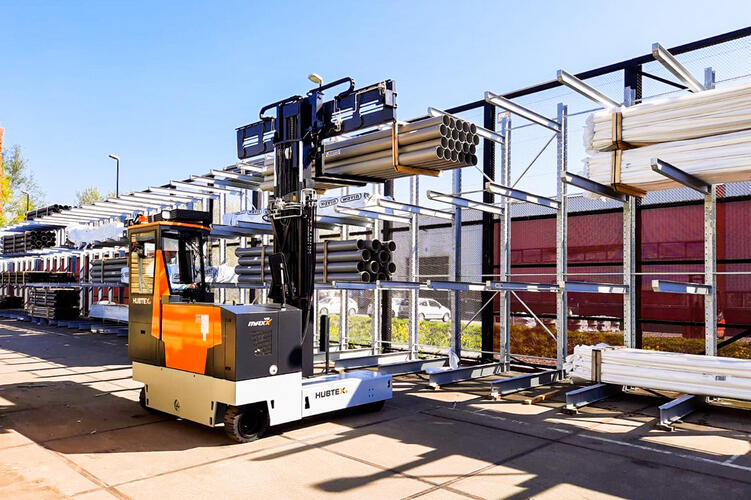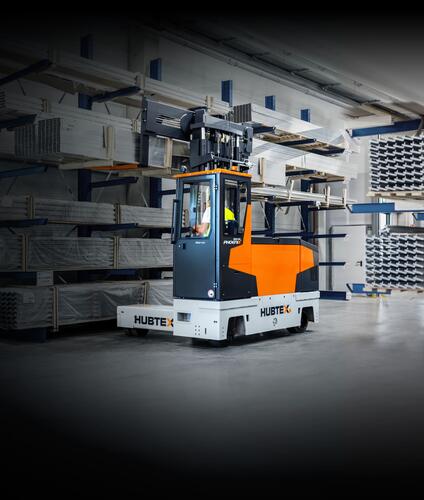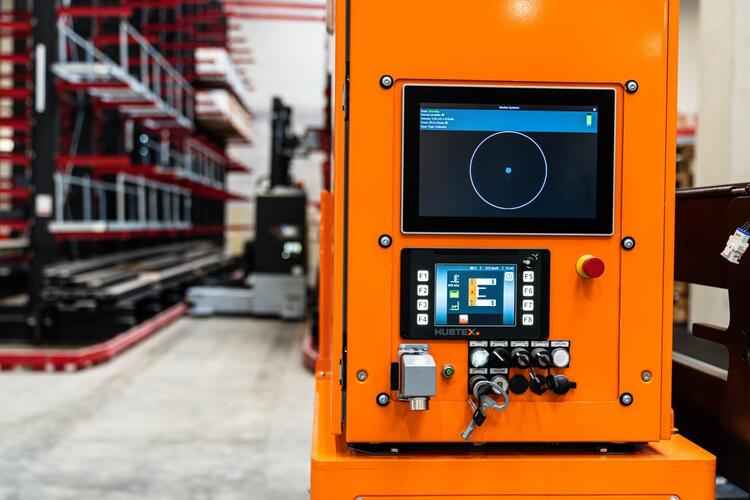Akumulatorowy
wielokierunkowy wózek widłowy
skrojony pod Państwa potrzeby
Faktem jest, że obsługa dłużyc wiąże się ze szczególnymi trudnościami. Ładunki mają różne wymiary i wymagają bezpiecznego transportu w wąskich korytarzach. W takich sytuacjach potrzebne są wózki zaprojektowane do takich zastosowań. Sztandarowym przykładem takiego rozwiązania są wielokierunkowe wózki widłowe firmy HUBTEX. Usprawniany przez ostatnie 40 lat wózek bazowy stał się podstawą do opracowania niezliczonych wersji urządzeń. Nasze wielokierunkowe wózki widłowedo uniwersalnych zastosowań w specjalistycznych branżach, służą firmom wsparciem w zakresie logistyki magazynowej. Nasze wózki znajdują zastosowanie m.in. obsłudze dłużyc, pakietów blach, płyt wiórowych, narzędzi, bębnów kablowych, walców, palet niestandardowych oraz materiałów okrągłych w systemach wąskokorytarzowych. Wszystkie warianty wózków sprawdzą się w zastosowaniu wewnątrz oraz na zewnątrz.
Akumulatorowy wielokierunkowy wózek widłowy
odpowiedni do Państwa zastosowań
Nasze cztery różne grupy produktów oferują największą liczbę wariantów na całym świecie.
![]() AGV-ready
AGV-ready
![]() PSA
PSA
![]() Prowadzenie indukcyjne
Prowadzenie indukcyjne
![]() Opcje kabiny
Opcje kabiny
![]() Amortyzacja wysuwu masztu
Amortyzacja wysuwu masztu
![]() Opcje baterii
Opcje baterii
![]() 2-częściowa rama wahliwa
2-częściowa rama wahliwa
![]() Wyposażenie specjalne
Wyposażenie specjalne
![]() Prowadzenie regałowe
Prowadzenie regałowe
![]() Indywidualne szerokości platformy
Indywidualne szerokości platformy
![]() Tryb wielozmianowy > 600 h/rok
Tryb wielozmianowy > 600 h/rok
Dopasowane indywidualnie| do 35 t | Wysokość podnoszenia do 14 000 mm
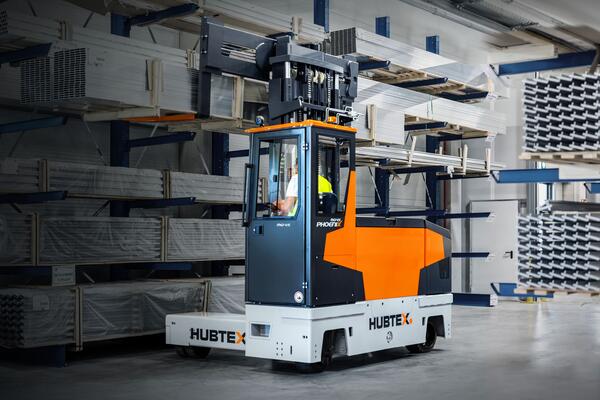
![]() Amortyzacja wysuwu masztu
Amortyzacja wysuwu masztu
![]() Opcje baterii
Opcje baterii
![]() 2-częściowa rama wahliwa
2-częściowa rama wahliwa
![]() Standardowe wyposażenie
Standardowe wyposażenie
![]() Prowadzenie regałowe
Prowadzenie regałowe
![]() Standardowa szerokość platformy
Standardowa szerokość platformy
![]() Tryb wielozmianowy > 600 h/rok
Tryb wielozmianowy > 600 h/rok
Alternatywa dla Diesla i gazu | Do 4,5 t | Wysokość podnoszenia do 7,5 m
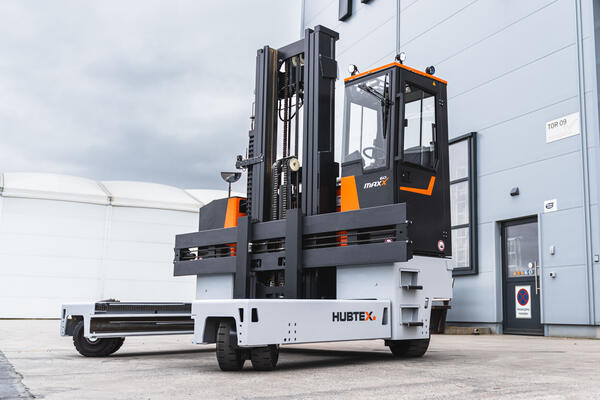
![]() 1-częściowa rama + 3 koła
1-częściowa rama + 3 koła
![]() Standardowe wyposażenie
Standardowe wyposażenie
![]() Prowadzenie regałowe
Prowadzenie regałowe
![]() Standardowa szerokość platformy
Standardowa szerokość platformy
![]() Tryb 1-zmianowy maks. 600 h/rok
Tryb 1-zmianowy maks. 600 h/rok
Uniwersalny wózek startowy | Do 3 t | 3 koła
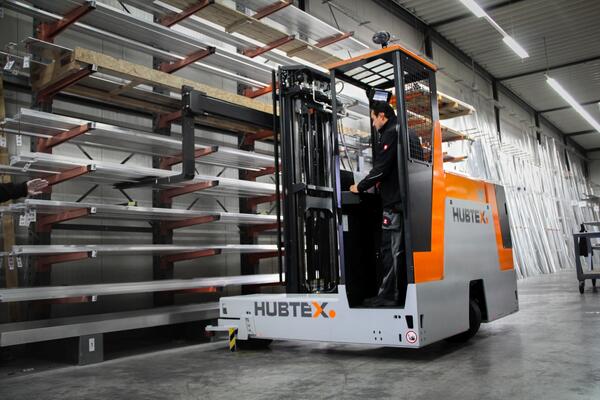
![]() 1-częściowa rama + 4 koła
1-częściowa rama + 4 koła
![]() Standardowe wyposażenie
Standardowe wyposażenie
![]() Prowadzenie regałowe
Prowadzenie regałowe
![]() Standardowa szerokość platformy
Standardowa szerokość platformy
![]() Tryb 1-zmianowy maks. 600 h/rok
Tryb 1-zmianowy maks. 600 h/rok
Wózek startowy do użytku wewnętrznego | Do 2 t | 4 koła

Odkryjcie możliwe korzyści w Waszym zastosowaniu
Wiemy, że obsługa dłużyc wiąże się ze szczególnymi trudnościami. Aby również w tym zakresie móc zaoferować najlepsze możliwe rozwiązanie, proszę przesłać nam swoje indywidualne wymagania.
Optymalizacja pracy i procesów w magazynie
Dzięki naszemu akumulatorowemu wielokierunkowemu wózkowi widłowemu
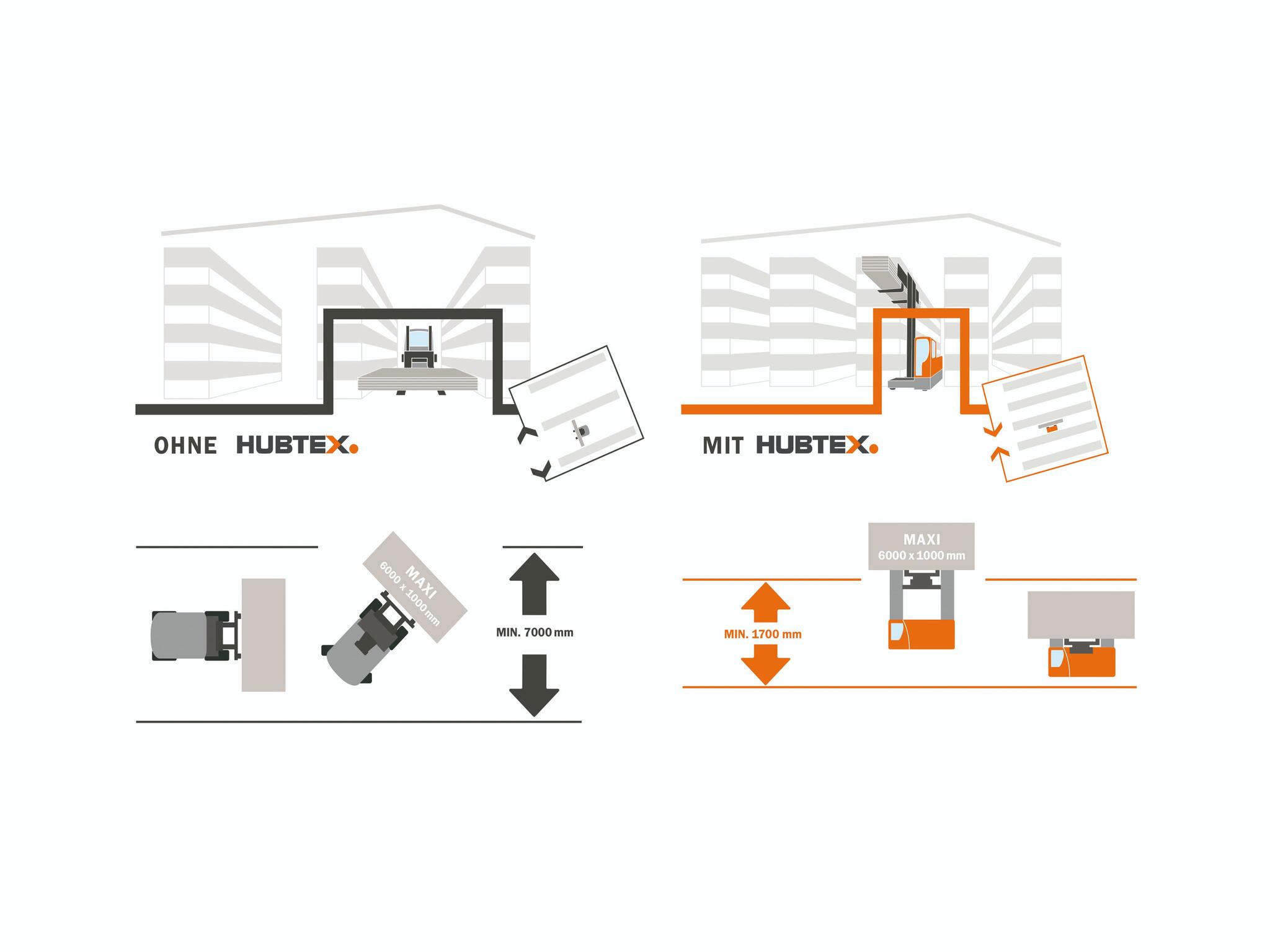
Optymalne wykorzystanie pojemności magazynu
Akumulatorowe wózki wielokierunkowe szybko, wydajnie i niezawodnie stawiają czoła kompleksowym zadaniom transportowym. W zastosowaniach przy obsłudze dłużyc doskonale zdają egzamin w wąskich korytarzach. Umożliwiają redukcję odległości między regałami dzięki ograniczeniu szerokości korytarza roboczego do minimum. Te zalety pozwalają zredukować uszkodzenia materiału i wózka do minimum pomimo ograniczonej przestrzeni. Nasze wózki umożliwiają bezpieczny i precyzyjny transport – bezpośrednio z samochodu ciężarowego na przewidziane miejsce w regale. Jest to możliwe dzięki bogatemu wyborowi systemów prowadzenia wózków i systemów ochronnych. Zapewnia to miejsce na dodatkowe rzędy regałów i pozwala na zwiększenie powierzchni magazynowych. Nasze wózki wyróżniają się za sprawą mniejszego promienia skrętu, bardziej precyzyjnej obsługi oraz nieznacznego poziomu hałasu.
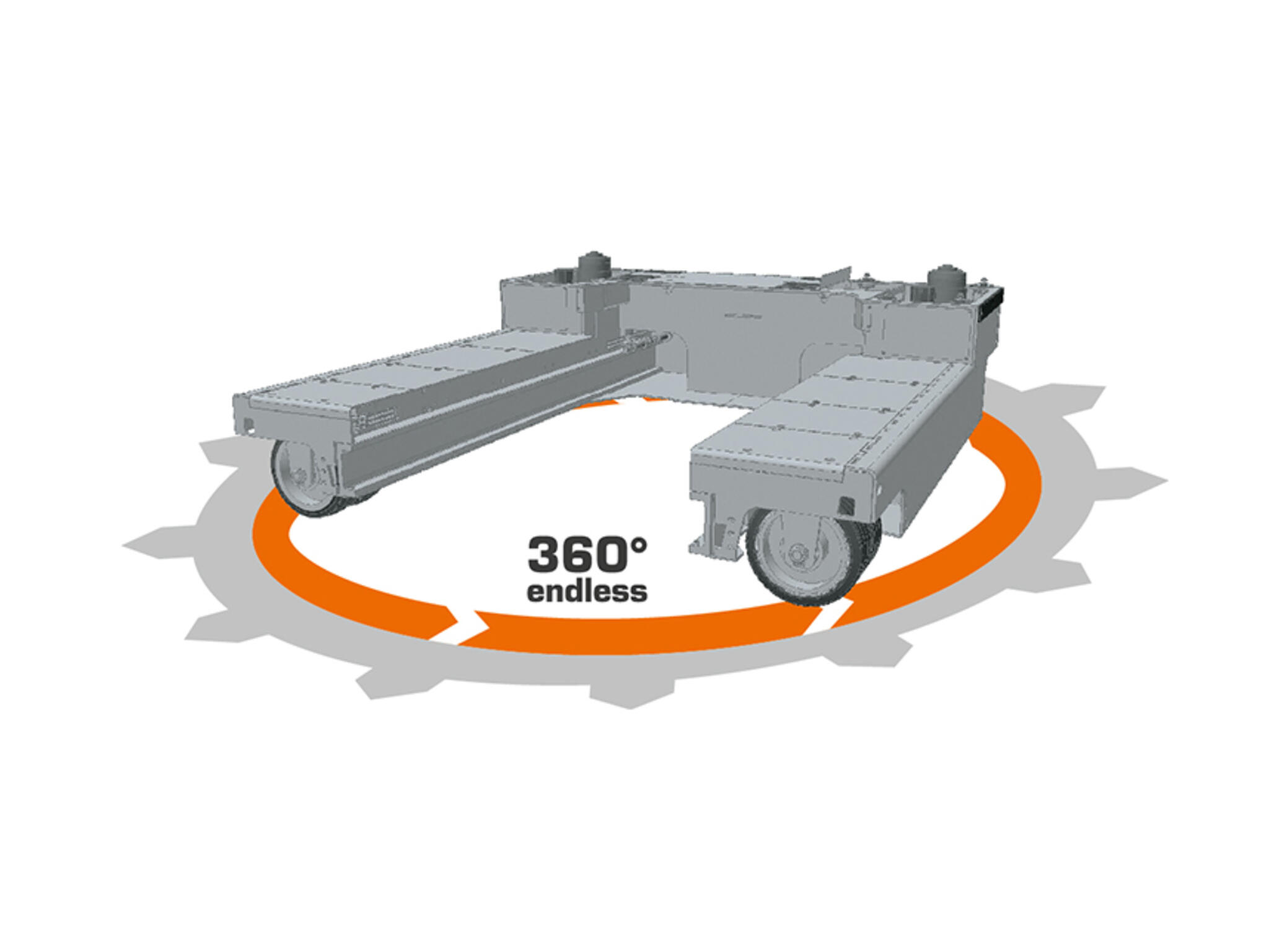
HUBTEX stawia na różne układy kierownicze (skręt kół): Nasz opatentowany wielokierunkowy system skrętu kół HX jest dostępny w serii wózków widłowych PhoeniX i MaxX, natomiast w pełni elektryczny system obrotu kół jest dedykowany serii PhoeniX. Choć obie cechy wyposażenia doskonale ze sobą współgrają, także same w sobie zapewniają wiele korzyści. Dzięki wielokierunkowemu systemowi skrętu kół HX wielokierunkowe wózki widłowe HUBTEX mogą bez zatrzymywania przechodzić z jazdy wzdłużnej w tryb jazdy poprzecznej. Pozwala to na znaczne skrócenie czasu potrzebnego na przestawienie kół i zapewnia bezkonkurencyjną zwrotność. Dodatkową zaletą jest wyraźnie zredukowanie zużycie kół. Ponieważ zmiana kierunku jazdy odbywa się w ruchu, koła nie obracają się w miejscu. Typowymi zastosowaniami będą miejsca i sytuacje, w których konieczna jest częsta zmiana kierunku jazdy, przykładowo w magazynach przejezdnych, podczas załadunku i rozładunku samochodów ciężarowych lub składowania blokowego. Korzystając z całkowicie elektrycznego systemu obrotu kół, można ograniczyć zużycie energii elektrycznej w stosunku do standardowego, hydraulicznego systemu obrotu o nawet 85%. Elektryczne silniki układu skrętu pracują jedynie podczas skręcania. Dodatkowo elektryczne systemy skręcania są niemal bezgłośne, dzięki czemu praca jest z punktu widzenia operatora znacznie przyjemniejsza. Warto pamiętać, że brak konieczności zatrzymania wózka zapewnia też znaczną oszczędność czasu. Firma HUBTEX w dalszym ciągu ma jednak w ofercie hydrauliczny układ obrotu kół: z uwagi na wyższe rezerwy siły sprawdza się wówczas, gdy praca wielokierunkowego wózka widłowego ma miejsce przy bardzo złych warunkach nawierzchni i dużych nośności.
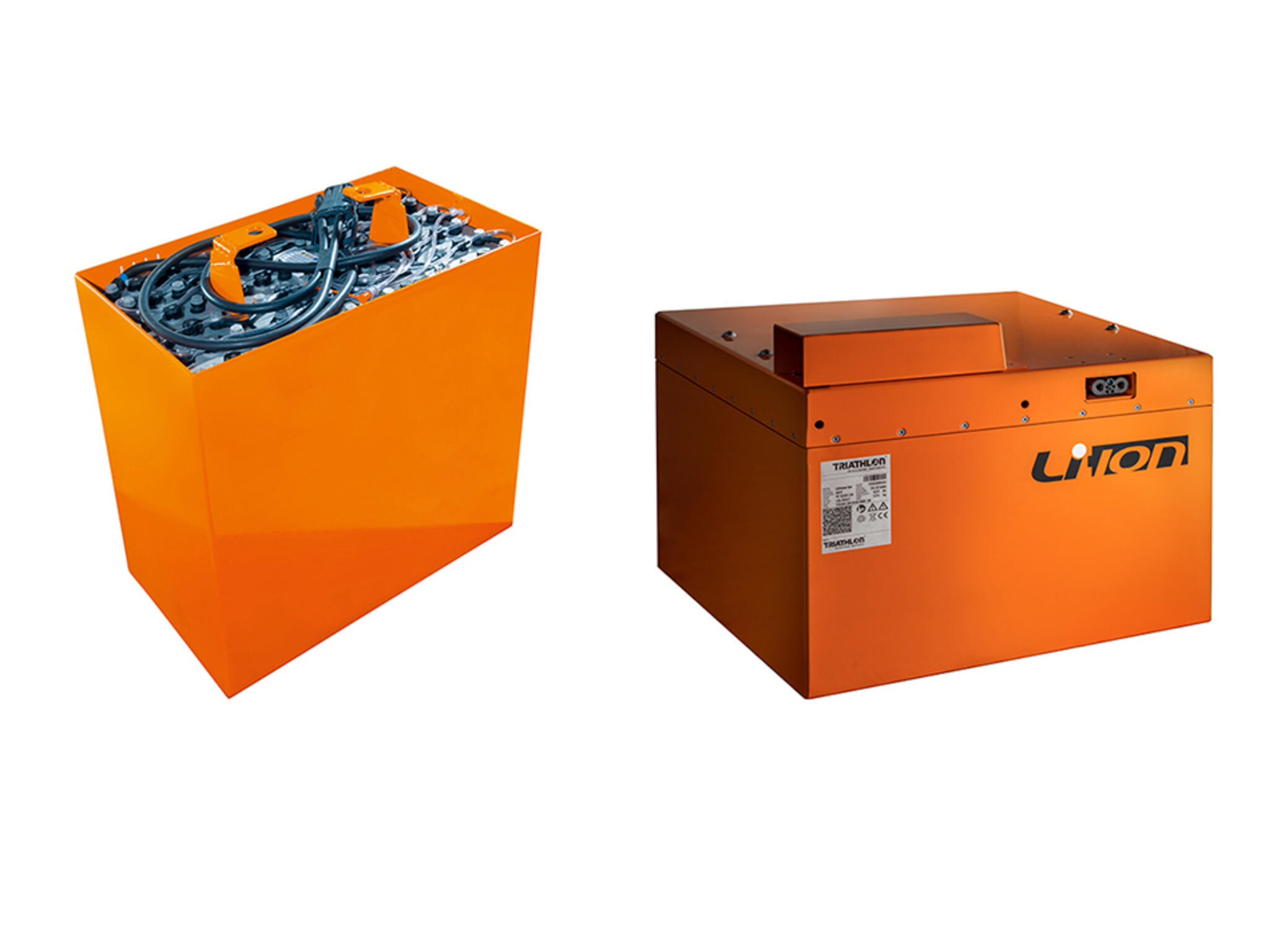
Przy zakupie wielokierunkowego wózka widłowego przykładamy szczególną wagę do wyboru najlepszego akumulatora. W zależności od obszaru zastosowania różne typy zapewniają różny stopień wydajności: Użytkownicy pracujący intensywnie czerpią korzyści wynikające z szybkiej stopy zwrotu na skutek zredukowanych kosztów ładowania oraz kosztów dodatkowych występujących w przypadku użytkowania akumulatorów litowo-jonowych. Sprawdzają się podczas ciągłej pracy dwu- lub trzyzmianowej, w przypadku której przerwy wykorzystuje się na pośrednie ładowanie. W przypadku zastosowań o krótszych czasach użytkowania akumulatory kwasowo-ołowiowe stanową właściwą alternatywę, a koszty inwestycji pozostają na stosunkowo niskim poziomie.
Koncepcja ładowania dostosowana pod kątem eksploatacji
Jakie połączenie akumulatora i prostownika najlepiej sprawdzi się w przypadku danego zastosowania? Dostępne są zarówno tradycyjne prostowniki 50 Hz, jak i prostowniki wysokoczęstotliwościowe. Ich wydajność lub stopień sprawności różni się zależnie od zastosowanego typu akumulatora. W ostatecznym rozrachunku to, czy zaoszczędzona energia uzasadnia dodatkowe koszty lepszej technologii ładowania, zależy od godzin pracy. Aby zaoferować jak najbardziej ekonomiczne rozwiązanie, firma HUBTEX opiera się na uznanych obliczeniach porównawczych. Analizujemy okres eksploatacji akumulatora w stosunku do jego ceny i użytkowania. Dzięki temu zapewniamy najlepsze rozwiązanie pod kątem danego zastosowania, które pozwala cieszyć się przy tym bezpieczeństwem technologii.
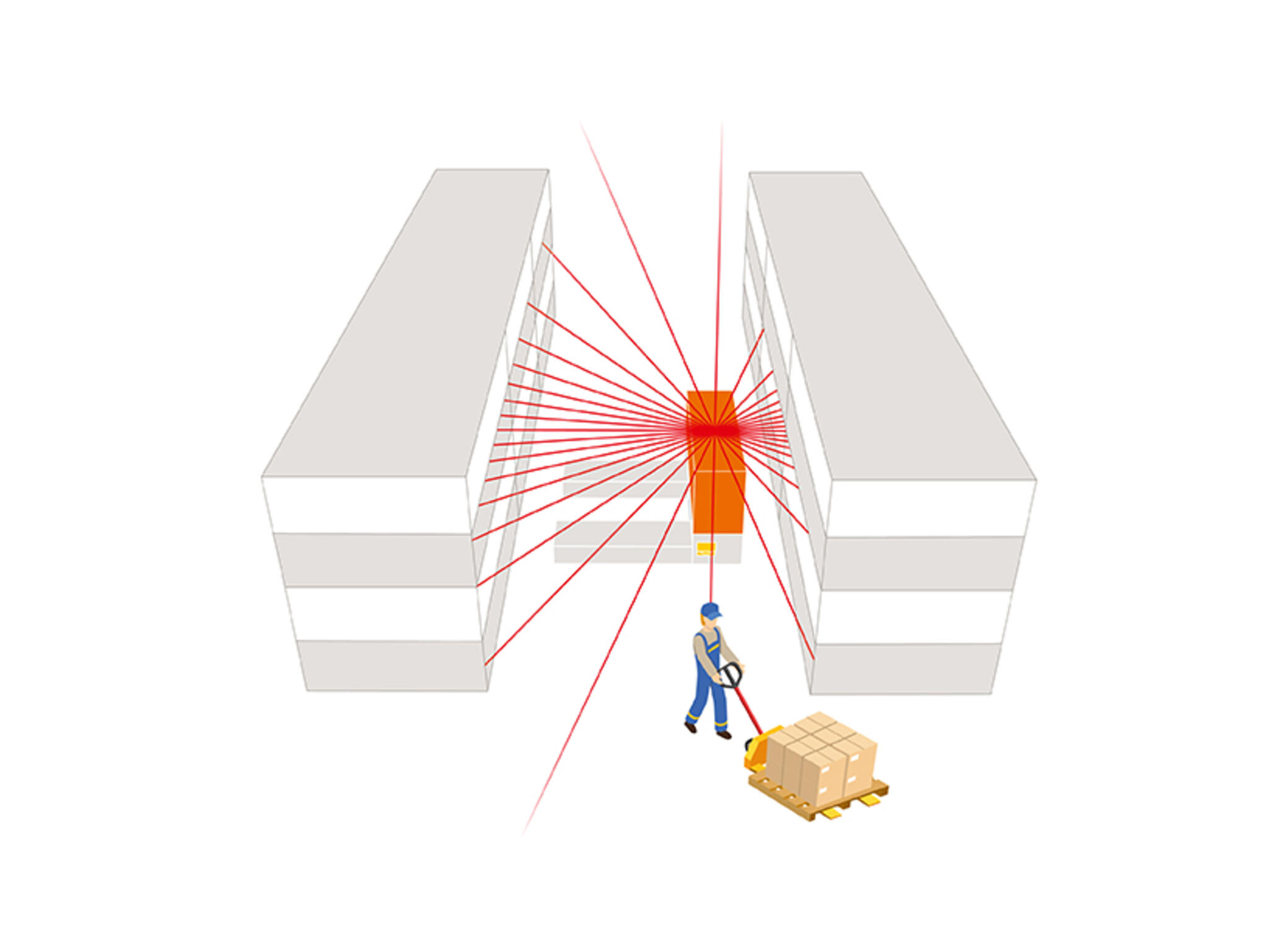
Firma HUBTEX wyznaje zasadę zgodnie z którą podczas transportu długich i nieporęcznych ładunków za pomocą urządzeń do komisjonowania to operator powinien przemieszczać się do ładunku. Pozwala to na zmniejszenie wymaganego nakładu pracy i zapobiega uszkodzeniom towaru. Biorąc pod uwagę różne wymagania, firma HUBTEX oferuje w przypadku gładkich podłóg przemysłowych koła poliuretanowe, a w przypadku nawierzchni gorszej jakości lub do stosowania na zewnątrz miękkie, elastyczne koła. Gwarantuje to ochronę komponentów wózka i zdrowia operatora. Dodatkowo pochył karetki wideł wózka zapewnia wysoką nośność resztową, umożliwiając bezpieczną obsługę przy znacznych wysokościach podnoszenia. Mobilne systemy ochrony osobistej włączają się automatycznie podczas wjeżdżania w korytarz i stale go monitorują za pomocą skanerów laserowych. W przypadku wykrycia osób lub przeszkód w korytarzu, które znajdują się w polu ochronnym skanerów laserowych, wielokierunkowy wózek widłowy automatycznie zatrzymuje się. Na rampach i wzniesieniach bezproblemową jazdę zapewniają silne silniki prądu zmiennego. Pojazd można bezpiecznie zatrzymać bez niekontrolowanego staczania.
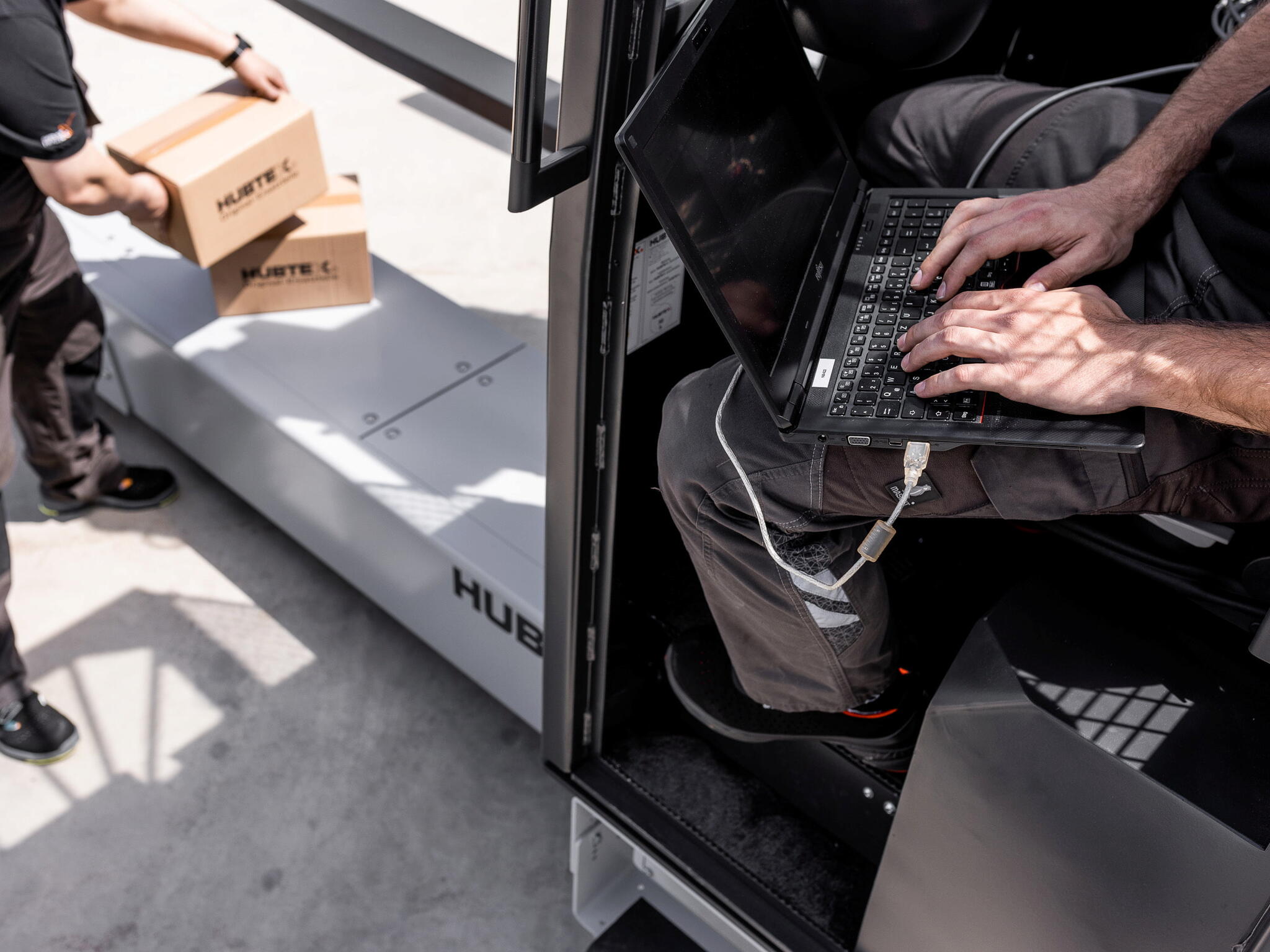
W serii akumulatorowych wielokierunkowych wózków widłowych ESTL | PhoeniX dostępny jest system zdalnej diagnostyki. Dodatkowo rozwiązanie "IoT" pozwala na przesyłanie ważnych danych wózka, takich jak przykładowo kody błędów i stan ładowania akumulatora do chmury i można je analizować w czasie rzeczywistym podczas pracy. W przypadku awarii wózka widłowego technicy firmy HUBTEX mają bezpośredni dostęp do danych wózka , co pozwala na szybsze udzielenie wsparcia. Na podstawie ilości motogodzin system automatycznie rozpoznaje stan urządzeń. Hubtex może zaproponować swoim klientom serwis profilaktycznie, we właściwym czasie pracy. Klienci korzystają z maksymalnej dostępności maszyn, minimalnych przestojów w produkcji oraz rozwiązania w zakresie konserwacji predykcyjnej. Możliwa jest także modernizacja używanych urządzeń.
Razem przeanalizujemy Twoje indywidualne potrzeby
Firma HUBTEX pozostaje podczas realizacji wszystkich projektów w ścisłym kontakcie z klientami, służąc wsparciem podczas całego procesu logistyki magazynowej. Dbamy o wszystkie ogniwa łańcucha, pomiędzy produkcją, zarządzaniem magazynem, automatyzacją, cyfryzacją procesów, planowaniem wydajności i zarządzaniem energią oraz optymalnie je ze sobą łączymy. Zapraszamy do kontaktu.
Zautomatyzowane wielokierunkowe wózki widłowe
Przyszłościowe rozwiązanie
Za sprawą stale rosnących wymagań w zakresie intralogistyki częściowa lub pełna automatyzacja procesów magazynowych stale zyskuje na znaczeniu. Firma HUBTEX przedstawia pierwszy na świecie w pełni zautomatyzowany akumulatorowy wielokierunkowy boczny wózek widłowy do transportu długich, ciężkich i nieporęcznych ładunków: nowy akumulatorowy wielokierunkowy boczny wózek widłowy PhoeniX już w podstawowej konfiguracji opracowano pod kątem stopniowej automatyzacji. Na podstawie tego prototypu opracowano teraz w pełni automatyczny model PhoeniX AGV. Wózek sprawdza się przede wszystkim podczas transportu dłużyc w przemyśle drzewnym, metalurgicznym i tworzyw sztucznych. Można go z powodzeniem zintegrować z obecnymi już koncepcjami logistycznymi. Podstawowe funkcje wózka obejmują dynamiczne mapowanie, dokładne pozycjonowanie i składowanie blokowe. Dodatkowo oparta na obiektach nawigacja wykorzystuje do wykrywania osób i przedmiotów dane skanera czujników do ochrony osób i maszyn. Dzięki interaktywnej, wirtualnej mapie magazynu możliwe jest pozycjonowanie i kontrola miejsca składowania. Wyniki skanowania pozwalają określić pozycję Phoenix AGV na terenie hali. Funkcja wykrywania ładunku umożliwia z kolei wykrywanie i podnoszenie dłużyc.
HUBTEX sprawdza szczegółowo, czy pełna automatyzacja ma z punktu widzenia użytkownika sens i z jakimi kosztami się ona wiąże.
Przydatne informacje na temat wielokierunkowych wózków widłowych
Odpowiedzi na często zadawane pytania
What is a multidirectional forklift?
The terms multidirectional forklift, multidirectional sideloader, four-way forklift, four-way sideloader as well as 4-way forklift are synonyms for the same group of vehicles. These vehicles are suitable for transporting long goods. For this purpose, you pick up the load from the side. The turning circle is considerably reduced by the multidirectional steering system.
When should a conventional sideloader be used?
2-way sideloaders are especially suitable for use in external warehouses for long goods. Their large tyres provide advantages on poor ground. This is described in detail on our special page.
Multidirectional sideloaders with electric or combustion engine?
In order to find the best truck for a particular application, it is not sufficient to consider individual aspects in isolation when selecting the right truck drive for a multi-directional truck. It is worthwhile for users to take a holistic view of the application areas, the total cost of ownership, the performance capacities and the service life. This is the only way to find the best individual solution. The development of electrically driven vehicles is rapid. Particularly in times of increasing environmental awareness of companies and the trend towards automation, it can be said that electric reusable forklifts are entering numerous new areas of application.
At Hubtex, we continue to focus on internal combustion engine vehicles, even though their share in our product portfolio has been steadily decreasing over the last few years and will continue to decrease. The areas of application for electric vehicles are expanding, but there are still application scenarios in which thermally powered industrial trucks are still clearly superior to electric vehicles. Accordingly, we are continuing to work on increasing the energy efficiency of our vehicles. One example of this is the development of our DQ-X model, in which we have placed energy consumption, noise minimization and ergonomics at the heart of the development of a diesel-powered four-way forklift.
Four-way sideloaders as well as 4-way trucks are synonyms for the same group of vehicles. These vehicles are suitable for transporting long goods. For this purpose, they pick up the load from the side. The turning circle is considerably reduced by the multidirectional steering system.
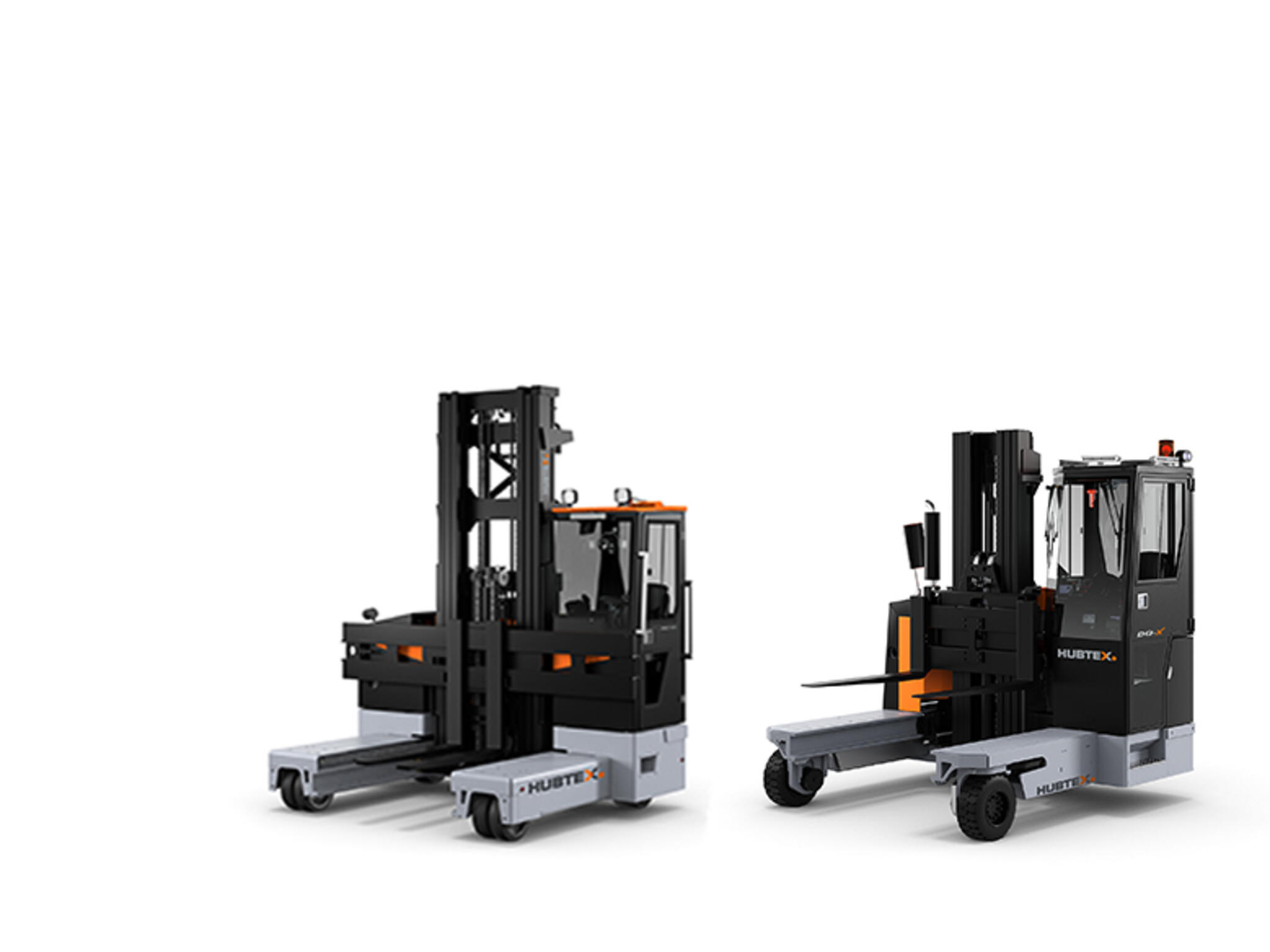
What is the difference between multi-directional sideloaders and four-way reach trucks?
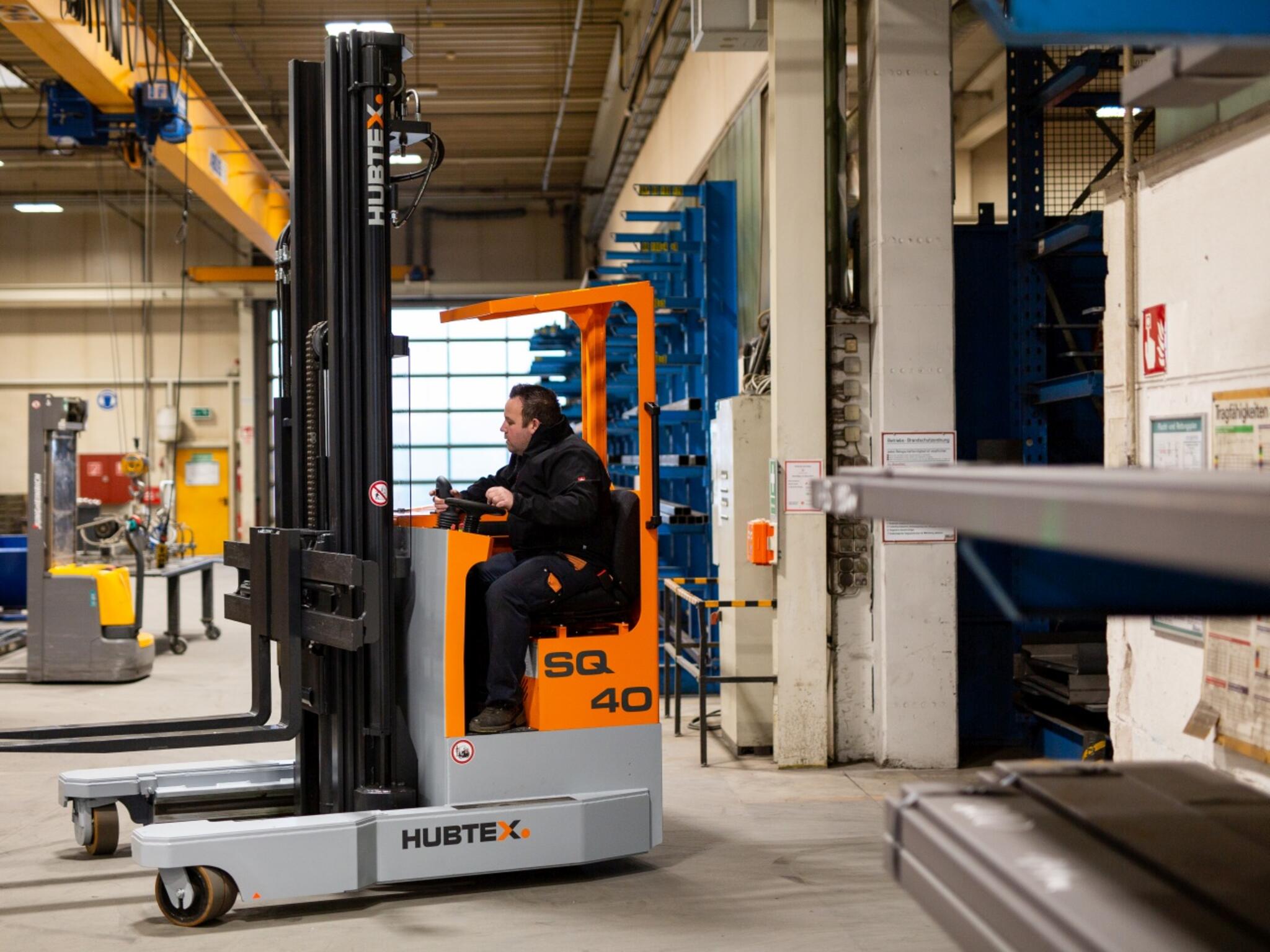
Both vehicle types are basically suitable for long goods transport. Depending on the area of application, however, there are differences between the vehicles due to their construction, function and dimensions. If there is sufficient space available to the user and/or the main part of all loads are Euro pallets and only rarely long goods and if only a hall application is planned, then a customer will certainly tend towards a four-way reach truck or a normal reach truck.
However, if the customer frequently has long goods loads and uneven floors made of asphalt or composite stone paving, then multidirectional sideloaders have clear advantages due to
- narrow width of the machine and therefore small turning radius,
- the load depth and load bed depth of the truck are identical
- the large mast feed = load depth + 100 mm,
- the 4-wheel chassis in a wide and stable frame and therefore better stability,
- the possibility of rail guidance,
- the two-part pendulum chassis to compensate for uneven ground,
- the vibration-damped driver's cab,
- the electronic 4-wheel steering system with 8 steering programs for precise movements,
- the two drive wheels and two double load wheels
- the larger wheel dimensions
- alternatively a soft elastic tyre for use on asphalt,
- the good view of the load or forks,
- of the identical length of the long fork carriage with the frame length,
- Constant vehicle width despite long fork carriage
- smaller "b"/"l2" dimension than for reach trucks
Why does HUBTEX offer vehicles in the same load capacity classes as 48V or 80V versions?
HUBTEX always tries to adapt its vehicles ideally to the respective application requirements. For this reason HUBTEX offers vehicles with 48V as well as 80V voltage, especially in the load capacity classes 3.0 to 4.5 t. As a matter of principle, HUBTEX does not offer vehicles in the load capacity range from 1.5 to 3 tons with a voltage of 80V. Here are some arguments:
PER 48 V (LOAD CAPACITY CLASS 1500 KG - 4500 KG):
- compact short design to allow small turning radii
- and to better enable block storage
- cheaper energy package in case of replacement procurement; also an important factor
- in the analysis of multi-shift operations
- lower weight of the vehicle, which leads to longer battery life
- and less wear on the wheels leads to
- Almost identical energy content with the same installation space
- Comparison of the energy content: 48 V x 930 Ah = 44.6 kW/hour |
- 80 V x 600 Ah = 48.0 kW/hour
- cheaper control components, cheaper spare parts
- for drive technology and working hydraulics
PER 80 V (LOAD CAPACITY CLASS 3000 KG - 10,000 KG):
- higher load capacities
- more performance due to larger pumps and motors
- slightly higher battery power
- Reduction of power losses, as less heat is generated by higher tension
CONCLUSION:
HUBTEX offers both 48V and 80V devices. Each HUBTEX device is designed in such a way that the relationship between required power, load capacity, battery capacity and voltage is optimally matched. For example, we can offer the customer an MQ 30 (2125) with 48 V but also alternatively an MQ 30 (2130) with 80 V. The main price difference is the price of the energy package.
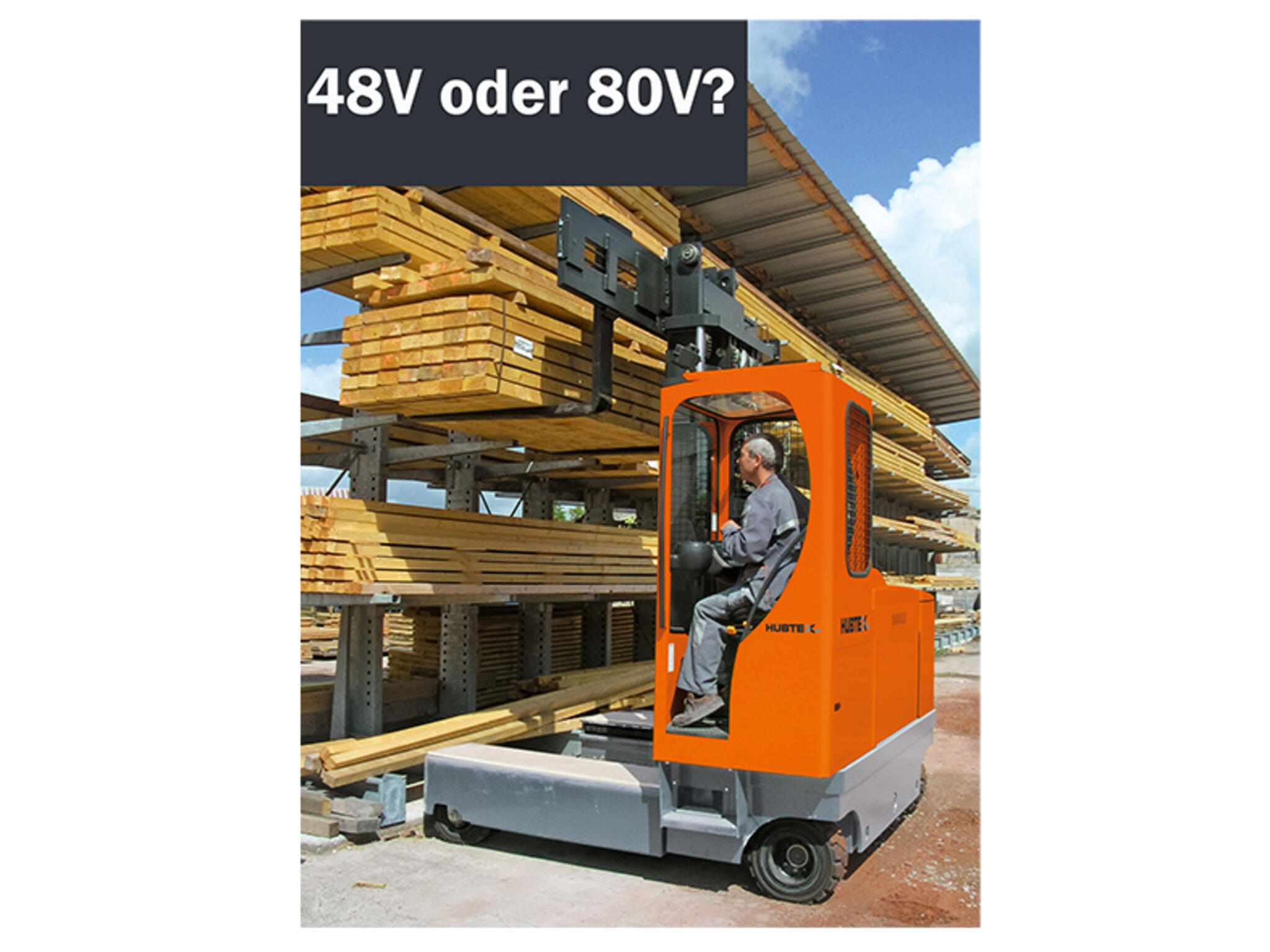
What is an HX multidirectional steering system?
By using the patented, optionally available steering system, it is possible to change from longitudinal to transverse travel without stopping. This reduces the time needed to change the wheels and offers optimum manoeuvrability. A further advantage is the significantly reduced wear of the wheels. As the change of direction takes place during travel, the wheels no longer rotate on the spot, which significantly reduces wheel wear and increases the service life of the wheels. Typical areas of application for the new steering system are applications with a particularly high number of changes of direction in freely movable warehouses, when loading and unloading trucks or in block storage.
What does HUBTEX call HIT?
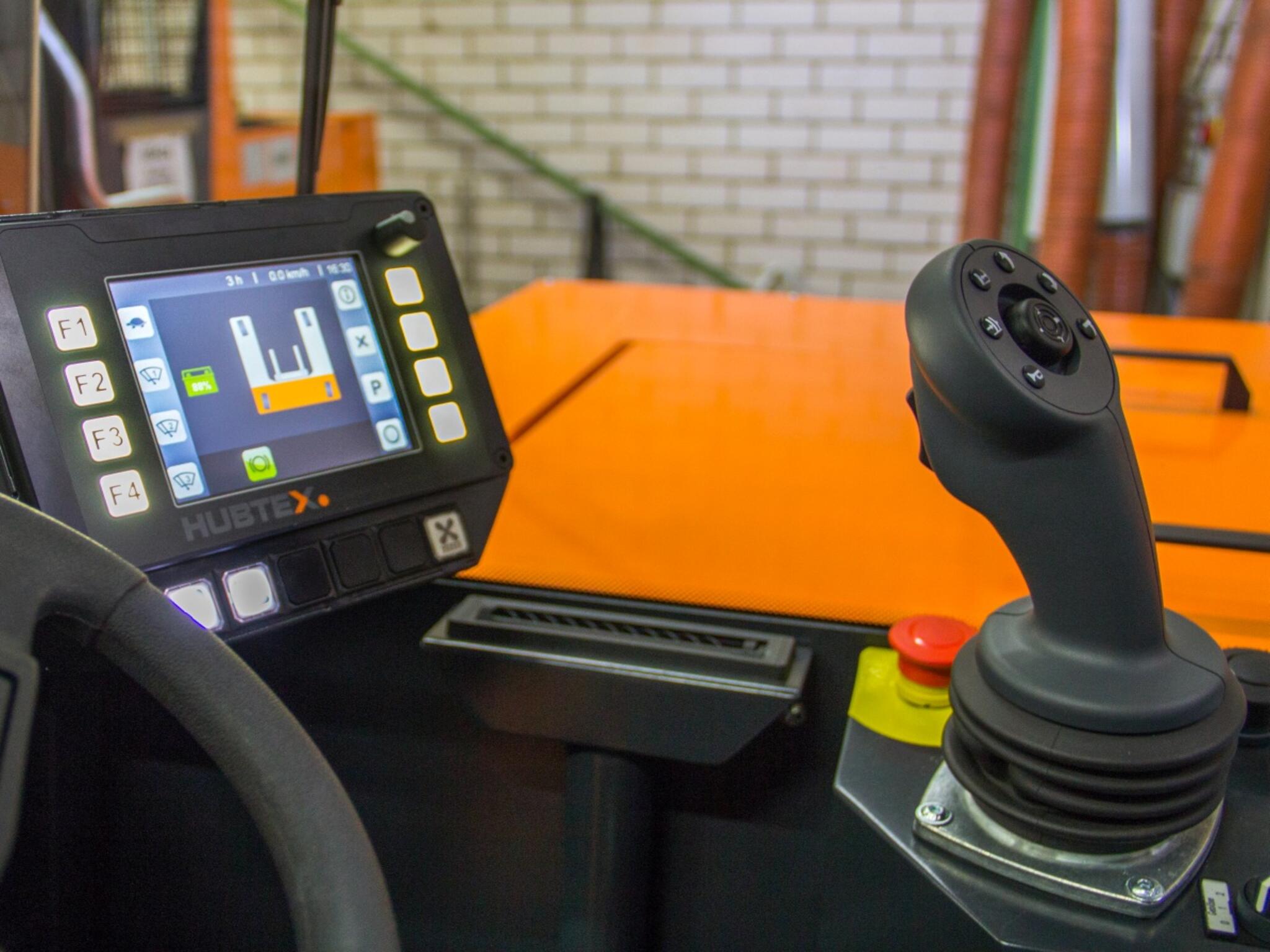
This is the information display for the driver in the cab. As a component of all electric multidirectional sideloaders, the FluX and MaxX models as well as many special vehicles from HUBTEX, the new HIT3 informs about all relevant operating conditions. The multifunctional display with its new visualisation provides the driver with all information on wheel position, speed and battery condition of the truck in a simple graphic display. Compared to its predecessor model, the new HUBTEX Information Terminal has numerous improved features. Depending on the customer's requirements, for example, truck access control can be carried out directly at the terminal with a personalised code. In this way companies can ensure that only authorised and trained employees drive the trucks.
Which accessories are available for HUBTEX vehicles?
HUBTEX vehicles are always adapted to the individual requirements of the application. This also includes the individual equipment of the vehicle with additional systems. The HUBTEX sales department has a comprehensive list of attachments, load handling attachments, storage aids, camera systems, load weighing equipment, steering systems, rack guiding systems, tyres, personal security systems as well as cabins and lighting equipment.
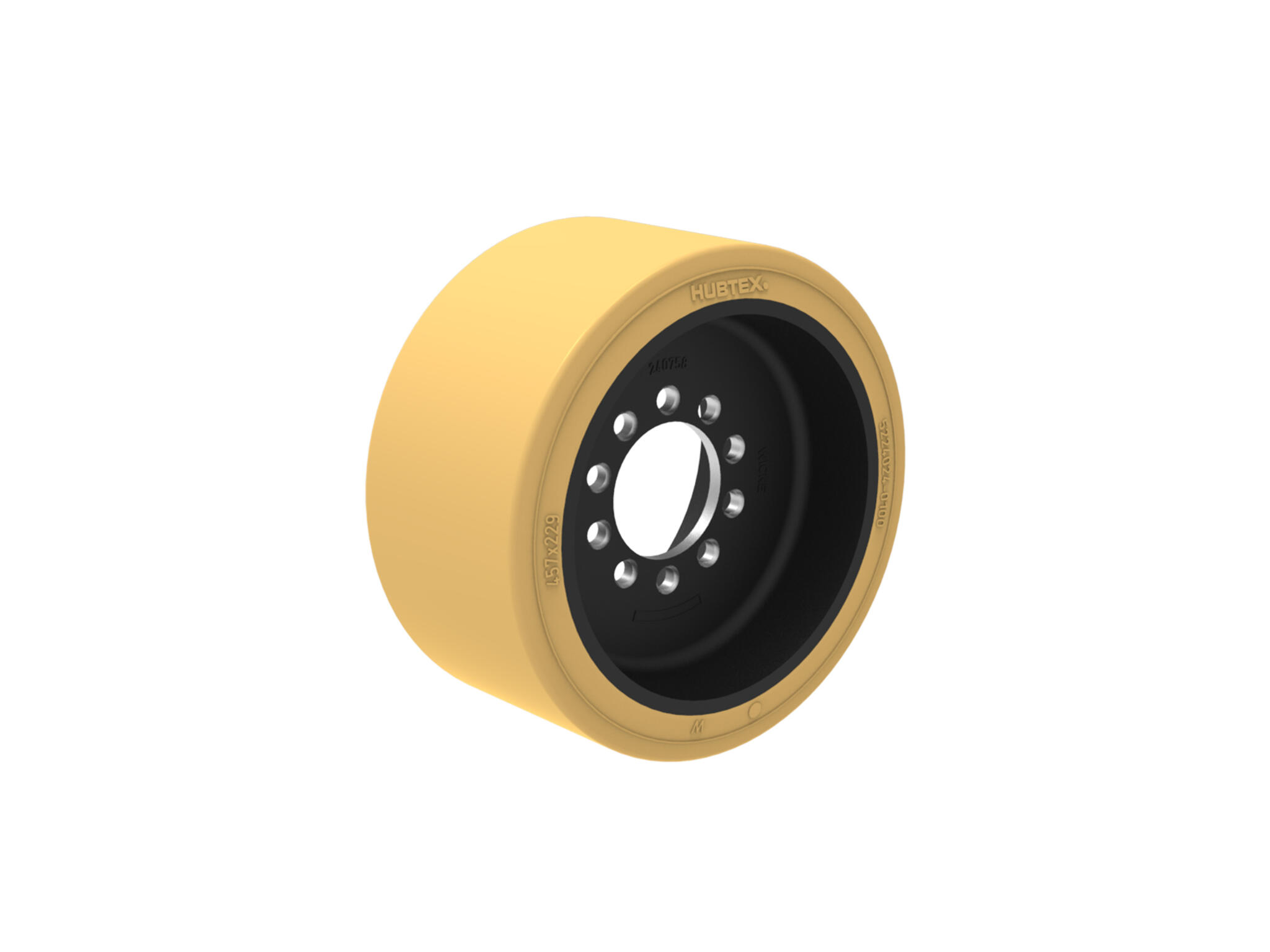
What is a narrow-aisle warehouse?
The narrow-aisle warehouse is characterised by its small footprint. The working aisle widths are accordingly kept as small as possible. In order to achieve a high degree of space utilisation and maximum storage capacity, the standard heights of the warehouse are also utilised to the maximum. The vehicles used travel with minimum safety distances and are guided in the aisle by track guidance systems. Furthermore, picking solutions can be easily integrated with the advantage that picking can be carried out directly in front of the pallet compartment. Other storage forms are the wide aisle warehouse or RGB or high-bay warehouse.
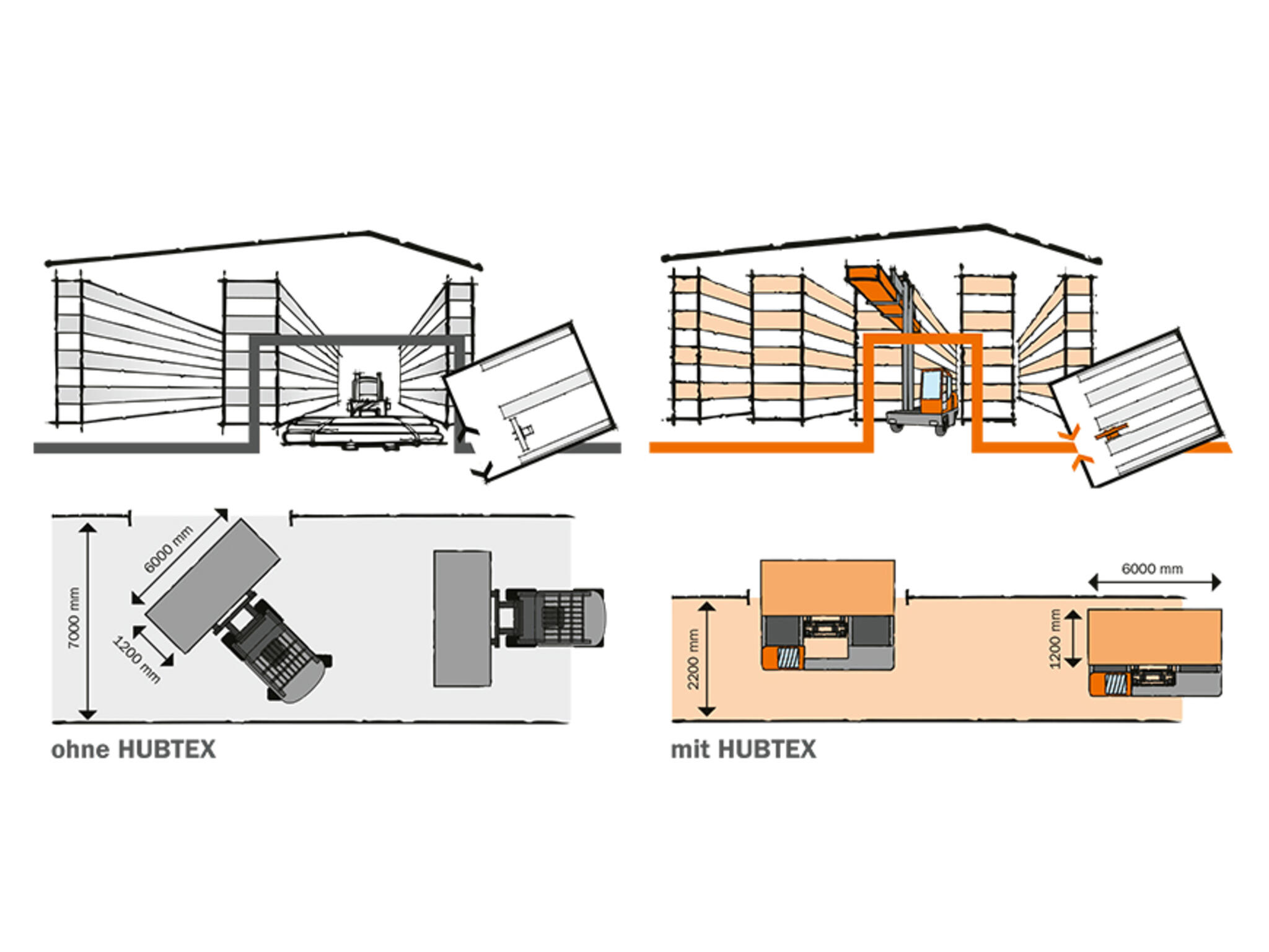
Which guide systems are available from HUBTEX?
In order to reduce the working aisle widths in a narrow aisle warehouse with minimum safety clearances, the installation of a guidance system is necessary to ensure high travel and lifting speeds and the necessary safety despite the narrow aisles. For maximum utilisation of the available storage space HUBTEX offers three different track guidance systems for narrow aisle solutions. With only 100 mm safety clearance per side the working aisle width is reduced to a minimum.
Here, the reusable stacker is guided by two guide rails fixed to the floor. The rollers, two on the left side and two on the right side, hold the truck in the rails in the middle of the aisle. The inclined entry angle, which can be detected, makes it easier for the driver to enter the lane.
The minimum width for the operation of mechanical guidance via guide rails results from three factors:
- the prescribed minimum safety clearances
- the stacking depth of the load
- and the individual truck configurations
In addition, the guide rails can be divided into high and low variants, whereby a minimum ground clearance of 15 mm is recommended for smooth operation.
Our experts will be pleased to support you in making the right choice for your guide rail system.
Here the forklift follows a stringline laid in the ground. This is fed by a frequency generator with a high-frequency alternating current (low voltage). This generates a concentric electromagnetic alternating field.
This field is detected by sensors mounted on the truck. This means that every change in the position of the truck is registered and an automatic compensating steering is triggered.
The truck is thus guided safely in the aisle.
Our experts will be pleased to help you choose the right guidance system.
The system is supported by the installation of transponders. These are embedded in the floor. As soon as the truck drives over a transponder, a specific function is activated on the truck. Examples of these functions are aisle detection, stopping the vehicle at the end of the aisle or reducing the speed before leaving the aisle.
The optical guidance system (150 mm safety distance per side) is based on the technology of inductive guidance and is used when the required iron-free space in the ground for the stringline is not available.
In the course of automation, Hubtex is also developing a laser-based guidance system.
Shelf guidance via laser localization
Laser navigation is a relatively new process at HUBTEX. The object-based laser navigation uses the raw data, e.g. the personal safety scanner or 2D laser scanner. The HUBTEX vehicle control system creates environment maps on the basis of the acquired data. The vehicle then identifies its own position within the map and is thus able to follow defined routes with an accuracy of up to +/- 15 mm. The procedure is tolerant of changes in the environment.
Automatic vehicle positioning
The horizontal and vertical vehicle positioning is an add-on for laser localization. As an alternative to laser localisation, automatic vehicle positioning can also be achieved by installing a barcode tape on the racking system.
The rack positioning consists of a horizontal and vertical positioning device as well as a touch panel in the cabin. After the shelf position has been manually entered into the HUBTEX touch panel, the shelf positioning is activated. By pressing the joystick for lifting and the accelerator pedal the shelf is approached semi-automatically.
WMS connection
The connection of the multi-directional forklift to the Warehouse Management System (WMS) is the next stage of expansion for automatic vehicle positioning and serves to connect the forklift to the WMS. The target height for storage/retrieval is transmitted directly from the WMS to the automatic vehicle positioning system. The driver only has to activate the lifting function. When lifting, the fork stops automatically at the correct height.
Which personal safety features (for drivers and for employees) are already built into your industrial trucks?
When planning a vehicle with our customers, the evaluation of the safety of the operators, the employees but also of the goods is an integral part of the standard procedure. We offer a whole range of safety systems for our vehicles. We distinguish between passive and active systems. Passive systems are, for example, distance warning sensors, optical and acoustic warning devices, ram and bounce protection devices. They are relatively inexpensive to install, but have the disadvantage that active driver intervention is still necessary in an emergency. For this reason, we offer active personal protection systems as another alternative, such as mobile and stationary personal protection systems, automatic aisle end guards, lift / drive cut-offs, speed reductions or warehouse navigation.
When must I use a personal protection system?
Narrow aisle racking aisles in warehouses are accident black spots in everyday operations. Traffic routes for power-driven or rail-bound industrial trucks must be wide enough that there is a safety clearance of at least 0.50 m on both sides of the traffic route between the outer limit of the industrial truck and the boundary of the traffic route. However, the safety clearances are often not feasible due to the system. For this reason, exceptions are possible if structural measures, access restrictions or protective installations on the industrial truck counteract the danger to pedestrians.
The safety devices differ between stationary and mobile systems. HUBTEX offers mobile systems for its vehicles.
- Alternative to mobile PPE
- automatic protective device
- Protection of persons when using industrial trucks in narrow aisles
- officially accepted
- Cost-effective alternative up to three shelf aisles
- Optional: Escape door monitoring / escape route monitoring
- Shelf aisle monitoring via two laser scanners
- If persons or obstacles are detected in the aisle, your HUBTEX automatically brakes to a standstill
- independent of the number of rack aisles
- two gait recognition systems






